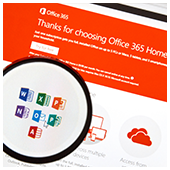Support is defined as providing assistance, encouragement, or comfort to help someone achieve a certain goal. For Mac’s version of Microsoft Office, support comes in the form of add-ins that aim to enhance user experience. Although usability testing is currently underway, you can still read about the latest developments here: Office add-ins are applications running […]
 Support is defined as providing assistance, encouragement, or comfort to help someone achieve a certain goal. For Mac’s version of Microsoft Office, support comes in the form of add-ins that aim to enhance user experience. Although usability testing is currently underway, you can still read about the latest developments here:
Support is defined as providing assistance, encouragement, or comfort to help someone achieve a certain goal. For Mac’s version of Microsoft Office, support comes in the form of add-ins that aim to enhance user experience. Although usability testing is currently underway, you can still read about the latest developments here:
Office add-ins are applications running within the suite’s constituent programs that provide features not available by default. In terms of usage, they’re similar to browser extensions, but add-ins are tailored to the tasks users carry out in Office programs such as Word, PowerPoint, and Outlook. For example, one popular add-in allows users to look up words and phrases on Wikipedia without leaving Word. Another introduces additional chart types that can be used in Excel.
Add-ins are usually free, but some require either a one-off payment or a monthly subscription. If Microsoft wants its Office Store to flourish, it makes a lot of sense to provide support for add-ins to the Mac version of the Office Suite. According to a report from MS Power User, to access add-ins, Mac users need to be members of the Insider program and opt into its Fast Ring. From there, you should check that the installation of your Office for Mac is build 170124 or later.
You can find the “Add-ins” option from the Insert menu in Word, Excel, or PowerPoint, and then select the store. Once at the storefront, find an add-in you’re looking for and install it. Currently, there’s no word on when add-ins will be available to all Office users on the Mac platform. But if the functionality is ready for public testing, it’s safe to assume the official release is already on its way.
If you have further questions or would like to be notified of the latest advancements, feel free to get in touch with us!


 Facebook, Instagram, Gmail, Google Maps, and YouTube are the kinds of applications that anyone with a smartphone knows by heart -- no mobile device is complete without them. These cross-platform apps are so popular that they tend to bury other apps probably just as useful. So if you can pry yourself away from the “most downloaded” apps, you might discover something special in 4 lesser known Google apps.
Facebook, Instagram, Gmail, Google Maps, and YouTube are the kinds of applications that anyone with a smartphone knows by heart -- no mobile device is complete without them. These cross-platform apps are so popular that they tend to bury other apps probably just as useful. So if you can pry yourself away from the “most downloaded” apps, you might discover something special in 4 lesser known Google apps.
 With our busy schedules, we all could use more time to ourselves and loved ones. Getting back home in time for a real meal is now a luxury for many. Thanks to productivity tools like Google’s G Suite and Microsoft’s Office 365, we’re able to regain some of our lost time. But unless money is no obstacle, you need to choose one over the other. So, should you go for G Suite or Office 365? We’ll address all crucial factors below.
With our busy schedules, we all could use more time to ourselves and loved ones. Getting back home in time for a real meal is now a luxury for many. Thanks to productivity tools like Google’s G Suite and Microsoft’s Office 365, we’re able to regain some of our lost time. But unless money is no obstacle, you need to choose one over the other. So, should you go for G Suite or Office 365? We’ll address all crucial factors below.